Seco-Larm E-936-S45RRGQ Handleiding
Seco-Larm
Niet gecategoriseerd
E-936-S45RRGQ
Bekijk gratis de handleiding van Seco-Larm E-936-S45RRGQ (4 pagina’s), behorend tot de categorie Niet gecategoriseerd. Deze gids werd als nuttig beoordeeld door 52 mensen en kreeg gemiddeld 4.8 sterren uit 26.5 reviews. Heb je een vraag over Seco-Larm E-936-S45RRGQ of wil je andere gebruikers van dit product iets vragen? Stel een vraag
Pagina 1/4

Conforms to UL 325
Caution:
This sensor was not designed to prevent bodily injury or loss of life.
This sensor was not designed for use in environments where explosive gases may be present.
Use of this sensor in certain security applications may be regulated by local laws or codes. SECO-LARM
is not responsible for compliance with such laws or codes.
Features:
Range 45 ft (14m)
Weatherproof (IP66) construction for
indoor/outdoor usage
Pre-wired t (2m) cord 6.5f
Bracket and mounting hardware included
for both sensor and reflector
Adjustable sensing range
Compact size
Typical Applications:
Sensor for garage doors or outdoor gates
Entry detection for store fronts
Assist in measuring parking distance
Light on type
IMPORTANT: The E- -S45RRGQ 936
conforms to UL325 for gate operators that
use the N.C. or 10kΩ resistor for
monitoring.
E- 6-S45RRGQ 93
Retro-Reflective Photoelectric Beam Sensor
Manual

ENFORCER Retro-Reflective Photoelectric Beam Sensor
2 SECO-LARM U.S.A., Inc.
Type
Retro-reflective
Sensing range
0.5~ ft (0.2~14 m) 45
Operating voltage
12 30V- / 60Hz, 100mA DC AC
Current draw
Standby
70mA@12VDC
Active
55mA@12VDC
Response time
10ms
Light source
IR LED
LED indicators
Yellow LED (Alignment), Red LED (Power on)
Trigger output
SPDT Relay output
(NO/NC/COM, with built-in esistor on N.O. output) 10KΩ r
Switching capacity
2A@30VAC/VDC
Enclosure
IP66 Weatherproof
Operating temperature
-4~131° F (-20~55° C)
Mounting brackets for sensor and reflector
Included
Specifications:
Dimensions:
Reflector
Transmitter/Receiver
3/8″ (9mm)
3
/16 ″ (4.5mm) thru holes
31/4″
(82mm)
®
13
/16
″ (20.5mm)
21
/2″
(63mm)
3
/16″
(5mm)
19/16″ (39mm)
2″
(51mm)
11
/8
″
(29mm)
61/2′ (2m) cable
1/4″ (6mm) diameter
Parts List:
1x
Transmitter/Receiver
1x
Round reflector
1x
Adjustment screwdriver
1x
13/16 " Phillips/slotted wood screw
1x
Plastic wall anchor
4x
13/16" Phillips wood screws
2x
13
/4" Phillips machine screws
2x
Hex nuts
2x
1/4" Phillips/slotted machine screws
1x
5/8
" Phillips/slotted machine screw
1x
Reflector hood for round/square reflector
1x
Sensor mounting bracket E-931ACC-BLS5Q
1x
Sensor mounting bracket E-931ACC-BLS1Q
Sample Installations:
Garage Door
Main Entrance Door
Store Entrance
Parking Distance Monitor
Entry Gate

ENFORCER Retro-Reflective Photoelectric Beam Sensor
SECO-LARM U.S.A., Inc. 3
Fig. 1
Red LED
Yellow LED
Installation and Adjustment:
Sensing Range Adjustment Functions:
The Sensing Range adjustment knob sets how powerful the
infrared signal emitted by the sensor is.
Min. Setting The infrared power signal emitted by the –
sensor is at its minimum or weakest.
Max. Setting The infrared power signal emitted by the –
sensor is at its maximum or strongest.
The objective of this function is to set the appropriate power
of the infrared signal corresponding to the distance between
the sensor and the reflector of a particular application. The
factory default setting is set at “Max.”
Note: If the infrared signal is too strong, the sensor may not
trigger. If the infrared signal is too weak, the sensor
may be susceptible to false alarms.
Installation:
1. Mount the reflector and the sensor so they face each
other (see pg. 4, "Mounting the Sensor").
2. Connect power to the sensor (see pg. 4, "Wiring") The .
red LED will turn ON indicating that the sensor is
powered on. If the yellow LED is ON, it indicates that
the sensor and reflector are aligned (although it still
may be necessary to slightly adjust the alignment).
3. Turn the sensing range knob to Max.
4. To find the correct alignment, slowly adjust the angles
of the sensor (and/or reflector) up, down, left or right.
Note: Correct alignment is reached when the yellow LED
turns ON.
Note: adjusting the sensor will not turn the yellow LED onIf ,
the sensor is at the edge of sensing the signal, and
may not work properly.
Adjusting the Sensing Range:
After the sensor and the reflector have been properly
installed, the next step is to adjust the appropriate setting
for the sensing range.
1. Open the top cover of the sensor as shown in Fig. 2.
2. Peel back the tape covering the sensitivity adjustment
access holes, taking care not to soil the tape so that it
can be easily reapplied.
Fig. 2
Sensing Range
Min
Max
3. Starting from the Max. position, slowly turn the knob
counter-clockwise until the yellow LED turns OFF.
This position represents the weakest point of the
infrared signal for this particular application. The
setting of the sensing range must be a little higher
than this point, so turn the knob clockwise to have a
little distance from the weakest point. The ideal
setting is midpoint between the weakest point and
Max.
4. Place the tape back over the sensitivity adjustment
access holes and snap the cover back into place,
ensuring that the cover is firmly seal ed.
Note: When turning the knob counter-clockwise from the
Max. position, if the weak point is near the Max.
position, the knob should be set at Max.
Note: Ensure that the tape is properly reapplied over the
sensitivity adjustment access holes, so that water
will not enter and cause damage.
Testing:
1. Power up the sensor. Both LEDs should be ON.
2. Pass the object to be detected between the sensor
and reflector. The yellow LED should turn OFF. This
indicates that the object has been detected.
Note: If a shiny object, such as a chrome-plated item or
something with reflective tape, is within close
proximity of the path of the IR beam the sensor
may not be able to detect the passing object. In this
case it may be necessary to turn the sensitivity
knob counter-clockwise until the desired sensitivity
setting is obtained.
LED Functions:
Red LED When ON, indicates the sensor is powered. –
Yellow LED When ON, indicates the sensor is properly –
aligned with the reflector, and the sensor is not triggered.
Note: Depending on the monitoring system used by the
gate motor, it may be necessary to use either the
N.C. output or the built- in 10kΩ resistor on the N.O.
output. Please refer to the gate operator manual
or the gate operator manufacturer for the preferred
monitoring method.
The E- 6-S45RRGQ will not work with gate 93
operators that monitor using the “heartbeat”
method.
Product specificaties
| Merk: | Seco-Larm |
| Categorie: | Niet gecategoriseerd |
| Model: | E-936-S45RRGQ |
| Kleur van het product: | Zwart |
| Breedte: | 20.5 mm |
| Diepte: | 39 mm |
| Hoogte: | 63 mm |
| Internationale veiligheidscode (IP): | IP66 |
| Certificering: | CE, RoHS |
| Responstijd: | 10 ms |
| Spanning: | 12 V |
| Omgevingstemperatuur (min): | -20 °C |
| Omgevingstemperatuur (max): | 55 °C |
| AC-ingangsfrequentie: | 60 Hz |
| Lichtbron: | IR LED |
| Stroom (max.): | 0.07 A |
| Alarmafstand: | 14 m |
Heb je hulp nodig?
Als je hulp nodig hebt met Seco-Larm E-936-S45RRGQ stel dan hieronder een vraag en andere gebruikers zullen je antwoorden
Handleiding Niet gecategoriseerd Seco-Larm

2 Februari 2024

2 Februari 2024

2 Februari 2024

2 Februari 2024

2 Februari 2024

2 Februari 2024

2 Februari 2024

2 Februari 2024

2 Februari 2024

2 Februari 2024
Handleiding Niet gecategoriseerd
- Eago
- Mobli
- Zoofari
- JAYS
- Kostal
- Violectric
- Total
- Sportime
- Krüger&Matz
- Caberg
- Revier Manager
- Monster
- Ubiquiti Networks
- Xtorm
- S.M.S.L
Nieuwste handleidingen voor Niet gecategoriseerd
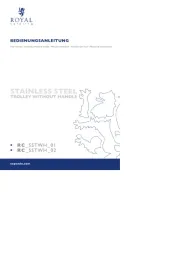
18 September 2025

18 September 2025
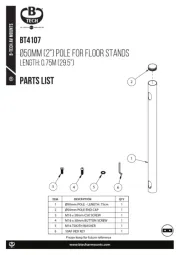
18 September 2025
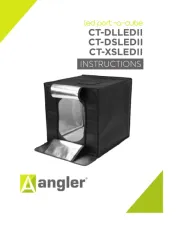
18 September 2025
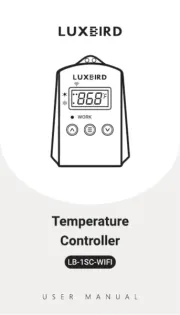
18 September 2025
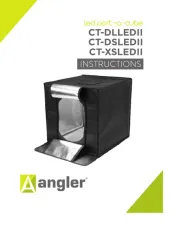
18 September 2025

18 September 2025
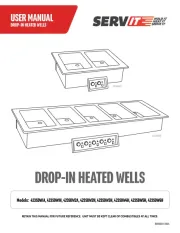
18 September 2025
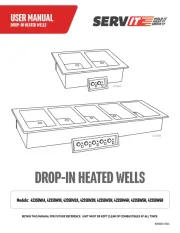
18 September 2025
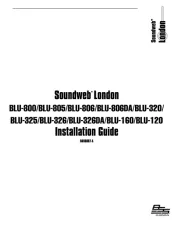
18 September 2025